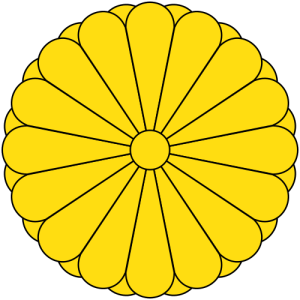Last week, on March 13, 2015, Microsoft co-founder Paul Allen’s team produced a video from their M/Y Octopus exploration vessel over the debris field of the battleship Musashi. The video showed the ship had broken apart into two sections, while the debris field was 800 meters long and 500 meters wide. One of their key discoveries was it had the Japanese Emperor’s chrysanthemum seal, which was a sixteen-petal flower. I must say, I watched this film with great enthusiasm, considering that I spent years of research on this topic for my novel series. http://musashi.paulallen.com/
As Allen’s team was videoing the debris field, one of the experts made a comment that astounded me: there are no blueprints, drawings,or other pictorial descriptions of the Musashi still in existence. The experts were identifying items on the Sibuyan Sea floor using drawings from the Musashi’s sister ship, the Yamato, which had a slightly different design. The commentators were able to identify almost all of the various features of this ship, even after it has lain on the ocean for seventy-one years. What they couldn’t immediately identify, these experts were able to surmise after brief conversations—an unbelievable and fantastic discovery!
As I mentioned last week, the Musashi was one of the two largest and most-powerful battleships ever built. The Musashi was sunk in the Battle of Leyte Gulf, which was fought between October 23 and October 26, 1944. By the time the Musashi and its sister ship, the Yamato, were launched into the Pacific War, they were already obsolete.
In last week’s blog, I speculated that gold might be found in the hull of the ship. While the ROV (the Octopus vessel’s mini-sub) didn’t go inside the Musashi, I now believe it is highly unlikely that there is any gold on the ship . . . if ever there was. Considering the gigantic battleship broke into two sections separated by this debris field, there didn’t appear to be any evidence of gold.
The ROV was steered remotely from the surface both manually and with a computer to lock it in to help stabilize the video quality. What is phenomenal about that is the ROV was operating in over 4000 feet of water.
The video was of the highest quality; all-digital, high-resolution, with incredible zooming capability. The lighting requirements to make the targets show up were also of the highest quality. In the late 1980s and early 1990s, I was consulted for a company designing and testing downhole cameras for oil and gas wells that would work under high pressure and high temperature. It was a very expensive, tedious project. Here the design would call for high pressure, but operate in very cold temperatures. The process and testing they must have gone through to get to this level of sophistication must have been significant.
At the end of the video presentation, all the ship’s crew stood in a moment of silence honoring the men who had served on the battleship Masashi. This was a class act, especially considering the Musashi was once considered an enemy vessel.

